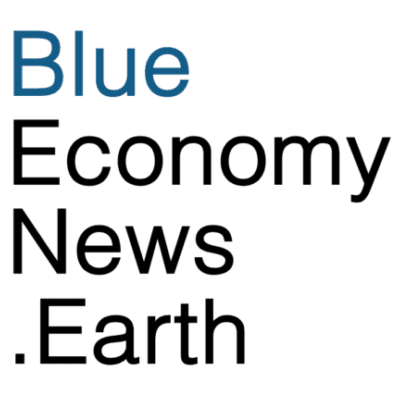The International Maritime Organization will meet this week to vote on the organization’s Net-Zero Framework establishing legally binding rules to reduce greenhouse gas emissions (GHG) from ships globally. Currently shipping contributes 3% of global GHGs; them measure aims to bring shipping to net zero by 2050.
The measures, set to be formally adopted this week before entry into force in 2027, will become mandatory for large ocean-going ships over 5,000 gross tonnage, which emit 85% of the total CO2 emissions from international shipping.
Lloyd’s List writer Declan Bush notes that the measure requires two-thirds of signatories to the IMO Prevention of Air Pollution from Ships agreement to be present and voting in order to pass. Abstentions don’t count. In April 57 signatories voted Yes and eight voted No. The United States, which has been threatening tariffs and other consequences to nations that support this and other sustainability measures, did not show up for the last vote. Bush said that puts the majority at 89% in favor, well clear of the 66% bar.
The measure has set up a battle among shipowners and ship owning groups. Some strongly advocate for a global standard that will exert pressure across the industry to transition. This would provide incentives to accelerate the production and proliferation of more sustainable fuels and support other measures like green ports and green shipping corridors. Currently some companies are making that transition on their own but that exponentially increases their individual costs.
Other companies advocate for LNG as a “transition fuel.” But as the Ocean Conservancy notes, LNG is composed almost entirely of methane, which is 27-30 times more potent than CO2 as a greenhouse gas over a 100-year timeframe. It is 82.5 times more potent than CO2 over the near term. Methane emissions from international shipping increased by roughly 150% between 2012-2018, primarily because of the increase in use of LNG as a propulsion fuel with LNG accounting for around 3.8 – 4.6% of energy consumed by international shipping per GHG4. And that doesn’t include the emissions from leaks or slips and intentional venting of uncombusted methane.
It is not surprising for organizations with fossil fuel interests to claim that it is “too soon” or “too difficult” to transition away from them.
Currently it can be difficult to find enough of various sustainable fuels—including green hydrogen, green ammonia and biomethane made from residues of farming or forestry (not virgin crops that could be used for food). More companies, however, are working to create the fuels. And new book-and-claim exchanges have been created so that ship owners can pay for the sustainable fuels and reap the regulatory benefit even if they can’t use them.
The IMO Net-Zero Framework will combine mandatory emissions limits and GHG pricing across an entire industry sector. It is the first in the world to combine mandatory emissions limits and GHG pricing across an entire industry sector.
Under the regulations, ships will be required to comply with:
- Global fuel standard: Ships must reduce, over time, their annual greenhouse gas fuel intensity (GFI) – that is, how much GHG is emitted for each unit of energy used. This is calculated using a well-to-wake approach.
- Global economic measure: Ships emitting above GFI thresholds will have to acquire remedial units to balance its deficit emissions, while those using zero or near-zero GHG technologies will be eligible for financial rewards.
There will be two levels of compliance with GHG Fuel Intensity targets: a Base Target and a Direct Compliance Target at which ships would be eligible to earn “surplus units.” Ships that emit above the set thresholds can balance their emissions deficit by:
- Transferring surplus units from other ships;
- Using surplus units they have already banked;
- Using remedial units acquired through contributions to the IMO Net-Zero Fund.
The IMO Net-Zero Fund will be established to collect pricing contributions from emissions. These revenues will then be disbursed to:
- Reward low-emission ships;
- Support innovation, research, infrastructure and just transition initiatives in developing countries;
- Fund training, technology transfer and capacity building to support the IMO GHG Strategy; and
- Mitigate negative impacts on vulnerable States, such as Small Island Developing States and Least Developed Countries.

